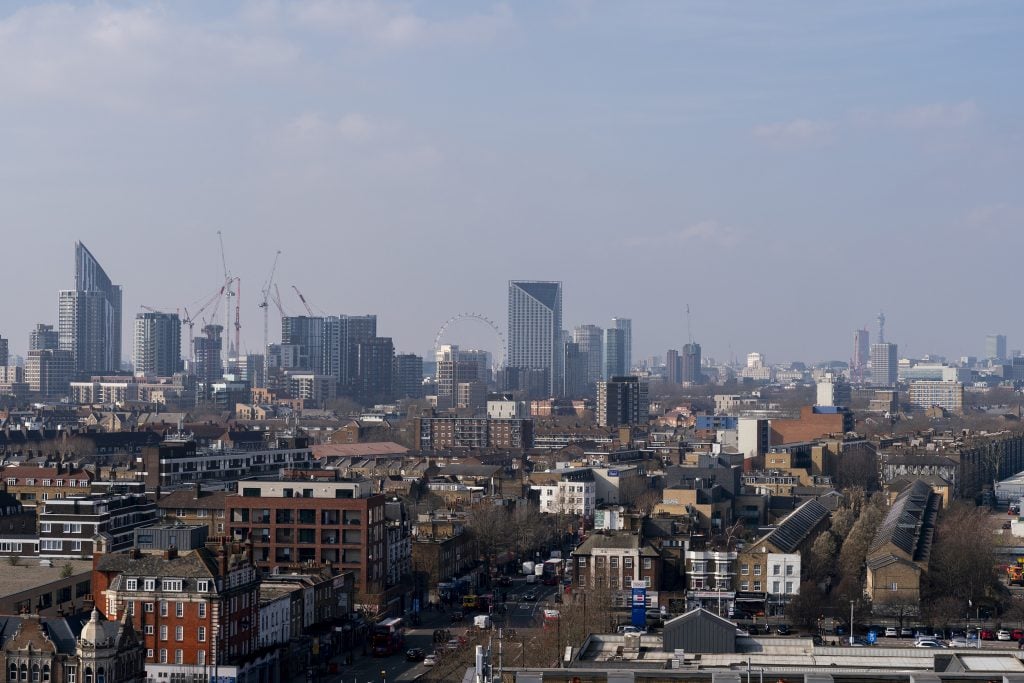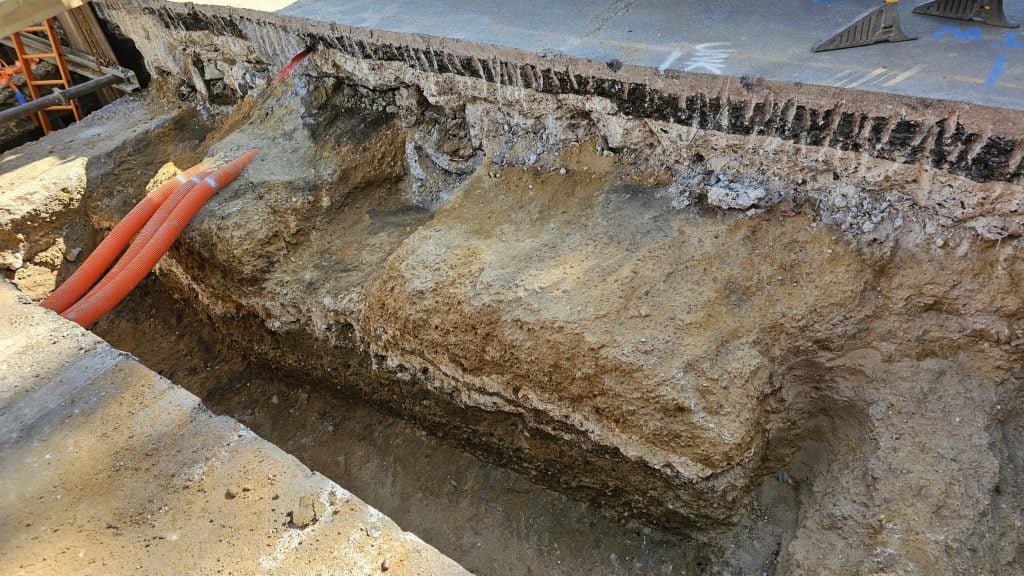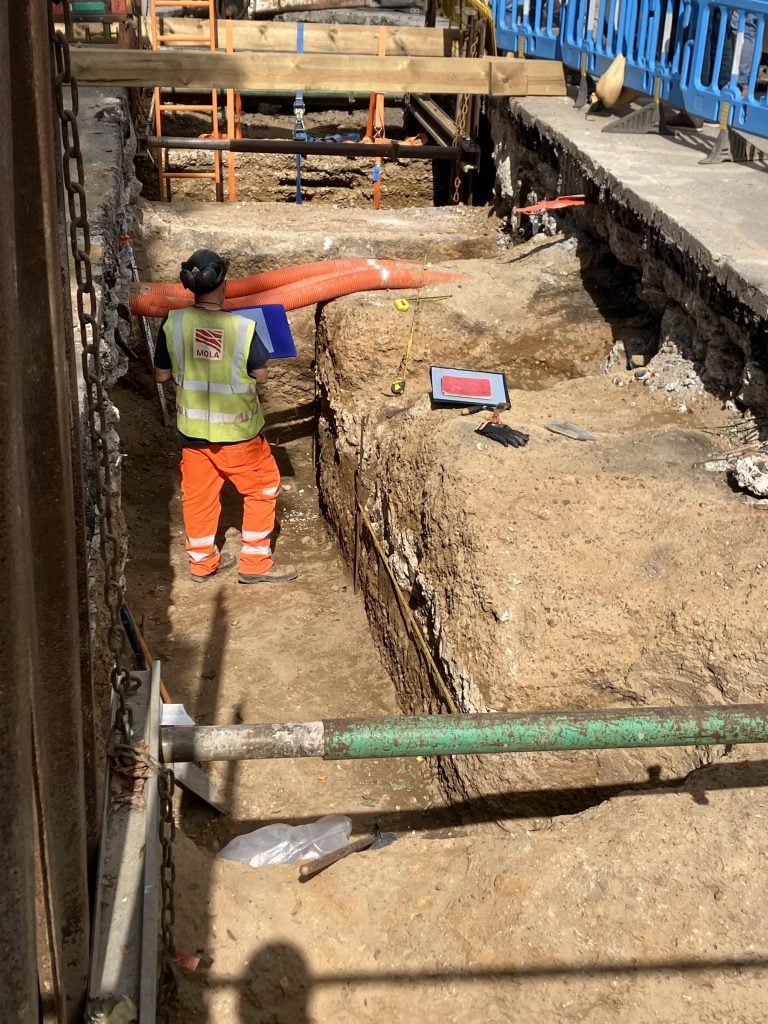Archaeology & History
A 2,000-Year-Old Roman Road, Trod by Emperors, Is Found Beneath London
“Watling Street” once ran from Dover in the East of the country through London to the West Midlands.

“Watling Street” once ran from Dover in the East of the country through London to the West Midlands.

Verity Babbs

A stretch of one of the most significant roads in Roman-era Britain has been unearthed underneath the asphalt of the Old Kent Road in southeast London.
The ancient road, known as Watling Street, was built 2,000 years ago, connecting large areas of the country from the West to the East. Its modern name refers to the Old English “Wæcelinga,” referring to the Waeclingas tribe who lived in St Albans, through which the route passes, in the early medieval period. The road was built shortly after the Roman invasion of 43 C.E. and would have been used by Roman emperors visiting Britain from Italy. A Roman barricade of about the same vintage was discovered in central London last year.
Britain was under significant Roman influence for 400 years after the invasion. London, then Londinium, was the Roman capital, and Dover, then Dubris, was a major port city, key for import, export, and access to Europe, as it is today, since it is just 21 miles from Calais, France.
A Roman traveler could have followed the Watling Street route for 276 miles, from Dover in the East up to Wroxeter in the West Midlands. The modern-day A2, a major road which connects London to Dover and of which the Old Kent Road is part, is believed to roughly follow the Watling Street route. Although Watling Street is typically Roman in the straightness of its route, it has not been clear, especially within London, exactly where the original road lies beneath the city’s modern surface.

A Roman road, preserved directly underneath the modern-day Old Kent Road 4. © Museum of London Archaeology, 2024.
Its rediscovery, which came as a result of work by the local government to develop the borough’s low-carbon heat network, marks the first time a part of the ancient road has ever been found intact directly underneath a modern road surface. The project to introduce low-carbon heating to 3,000 homes on the Old Kent Road is hoped to reduce the borough’s carbon footprint by 11,100 tons per year. Local councillor Helen Dennis called it “extraordinary” to “literally be peeling back the layers of Old Kent Road’s history as we work towards a greener future.”
The section of Watling Street which was discovered underneath the asphalt measures almost 19 feet by almost 5 feet, and is made up of a compacted gravel foundation with chalk layers, with sand and gravel layers above it. The top layer has been lost over time but would have reached a similar height to the modern Old Kent Road. A new energy supply for the borough’s heat network will be the latest layer in the road’s rich history.
Another section of the road was excavated nearby, close to the Cantium Retail Park on the Old Kent Road, in the 1990s. The borough archaeologist for Southwark Council, Chris Constable, called the extent of the road’s preservation “remarkable” and said that he is hopeful that “this project will answer some other archaeological questions in the borough.”

A Roman road, preserved directly underneath the modern-day Old Kent Road 4. © Museum of London Archaeology, 2024.
Archaeologists from the Museum of London Archaeology (MOLA) confirmed the discovery as Watling Street. Dave Taylor, MOLA’s environmental supervisor and project manager, said: “It’s amazing this section of road has survived for almost 2,000 years. There has been so much activity here over the past few hundred years, from sewers to power cables, tramlines and of course the building of the modern road, so we’re really excited to find such a substantial chunk of Roman material remaining.”
Archaeologist Gillian King, the director of commercial archaeology company RPS, who has previously worked for both Southwark Council and MOLA, said the discovery “has redrawn the Roman road map for Southwark and informs on Roman construction techniques generally. It is a key finding for archaeological research for London.”
Plans have been made to mark the discovery with a sign on a railway bridge on the Old Kent Road.